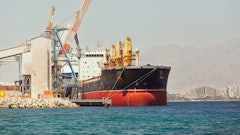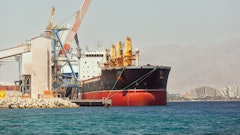
The Red Sea, a vital conduit for East-West trade, is undergoing unprecedented turmoil due to persistent attacks by Houthi rebels, causing significant uptick in fuel and insurance costs, longer voyages and capacity soak up for the transportation and logistics sector, according to recent data from Container xChange.
“We foresee that the rate hikes will flatten out in the mid to long term. We have enough capacity, which can be soaked up in longer transit times and yet not cause permanent capacity crunch,” says Christian Roeloffs, co-founder and CEO, Container xChange.
Key takeaways:
- Shipping lines have raised slot prices significantly, with the average rate on China-Europe quoted at $5,400, up from $1,500 just the week before; that’s a 3-times increase.
- Spot rates in Shanghai, Hamburg, Boston, indicate examples of the steep demand increase that is currently being witnessed for boxes in these hotspots.
- Meanwhile, container trading spot rates are increasing at a staggering rate.
- The container price sentiment Index (xCPSI) reached an all-time high as container price anticipation peaks. This indicates that the supply chain professionals are expecting these prices to further shoot up in the coming weeks significantly.
- Insurance for cargo transiting Red Sea has become challenging. On top of it, insurance costs have surged in anticipation of the difficulties.
- Another element is the fuel cost, which has increased roughly by 20-23% by way of traveling through the Cape of Good Hope, as compared to the traditional Suez Canal route.
- So far, 500 out of 700 vessels have been diverted, soaking up significant capacity from the existing overcapacity that the industry was grappling with.
“Shipping companies are demanding more containers now as they avoid Red Sea. Therefore, shipping companies and leasing companies have placed more than 750,000 TEU ISO container orders out of China in the last two months,” Roeloffs adds. “Ultimately, the final consumer pays the freight cost. In the short term, usually there is some intermediary that pays the bills, because they have promised at some certain price, but ultimately in normal circumstances, the price per unit is adjusted marginally to the end consumer when such a disruption occurs.”


























